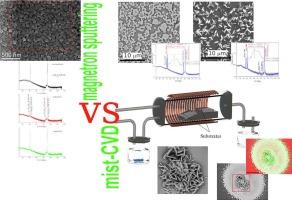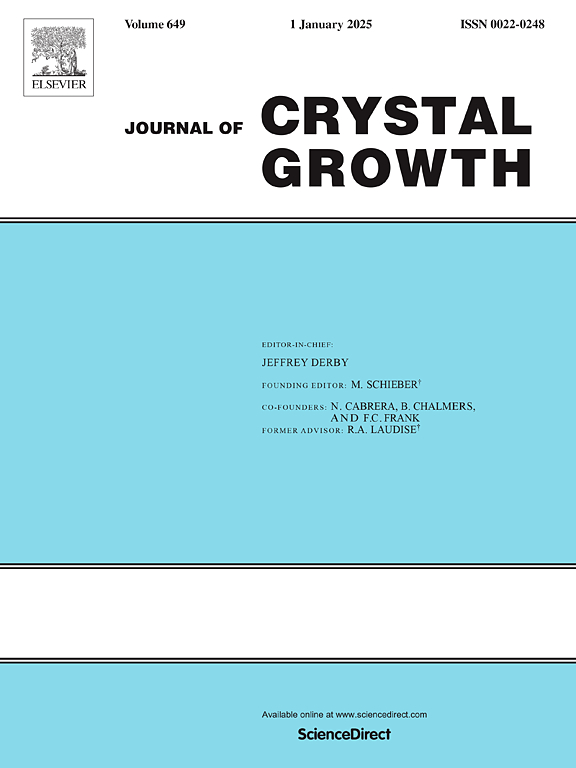采用雾相cvd和射频磁控溅射技术在蓝宝石衬底上沉积Cr2O3层
IF 2
4区 材料科学
Q3 CRYSTALLOGRAPHY
引用次数: 0
摘要
我们使用一种新的雾- cvd技术开发了类似刚玉的Cr2O3 / α-Al2O3异质结构,通过改变生长参数来改变Cr2O3薄膜的形貌和结晶度。该技术被认为是传统射频磁控溅射的替代方案,由于溅射膜的晶体完美性较低,需要后续退火。对两种方法沉积的层进行了分析。在350°C下退火3小时的磁控溅射薄膜的结晶度最高,然而,任何用雾- cvd生长的薄膜都具有较少的错位块的马赛克铺展。此外,雾- cvd薄膜具有更发达的形貌,具有特异取向晶体的亚结构,可以在生长过程中直接进行修饰。结果表明,化学气相沉积法制备的Cr2O3薄膜的生长速率明显高于溅射法。因此,通过雾- cvd技术生长的Cr2O3 / α-Al2O3异质结构可以作为功能半导体表面应用。本文章由计算机程序翻译,如有差异,请以英文原文为准。

Cr2O3 layers deposited on sapphire substrates by mist-CVD and RF magnetron sputtering
We have developed corundum-like Cr2O3 / α-Al2O3 heterostructures using a novel mist-CVD technique, varying the growth parameters to modify the morphology and crystallinity of the Cr2O3 films. This technique is considered as an alternative to conventional radio-frequency (RF) magnetron sputtering, which requires a subsequent annealing due to low crystal perfection of the sputtered films. Layers deposited by both techniques are analyzed. The highest crystallinity among magnetron sputtered films was achieved in case of 3-hour annealing at 350 °C, however, any of the films grown by mist-CVD possess the mosaic spread with less-misoriented blocks. Moreover, the mist-CVD films own a much more developed morphology with a substructure of specifically oriented crystallites, that can be modified directly during a growth process. It has been shown that the growth rates of Cr2O3 films by chemical vapor deposition are significantly higher than in the case of sputtering. Thereby, Cr2O3 / α-Al2O3 heterostructures grown by mist-CVD technique may have applications as functional semiconductor surfaces.
求助全文
通过发布文献求助,成功后即可免费获取论文全文。
去求助
来源期刊

Journal of Crystal Growth
化学-晶体学
CiteScore
3.60
自引率
11.10%
发文量
373
审稿时长
65 days
期刊介绍:
The journal offers a common reference and publication source for workers engaged in research on the experimental and theoretical aspects of crystal growth and its applications, e.g. in devices. Experimental and theoretical contributions are published in the following fields: theory of nucleation and growth, molecular kinetics and transport phenomena, crystallization in viscous media such as polymers and glasses; crystal growth of metals, minerals, semiconductors, superconductors, magnetics, inorganic, organic and biological substances in bulk or as thin films; molecular beam epitaxy, chemical vapor deposition, growth of III-V and II-VI and other semiconductors; characterization of single crystals by physical and chemical methods; apparatus, instrumentation and techniques for crystal growth, and purification methods; multilayer heterostructures and their characterisation with an emphasis on crystal growth and epitaxial aspects of electronic materials. A special feature of the journal is the periodic inclusion of proceedings of symposia and conferences on relevant aspects of crystal growth.
 求助内容:
求助内容: 应助结果提醒方式:
应助结果提醒方式:


